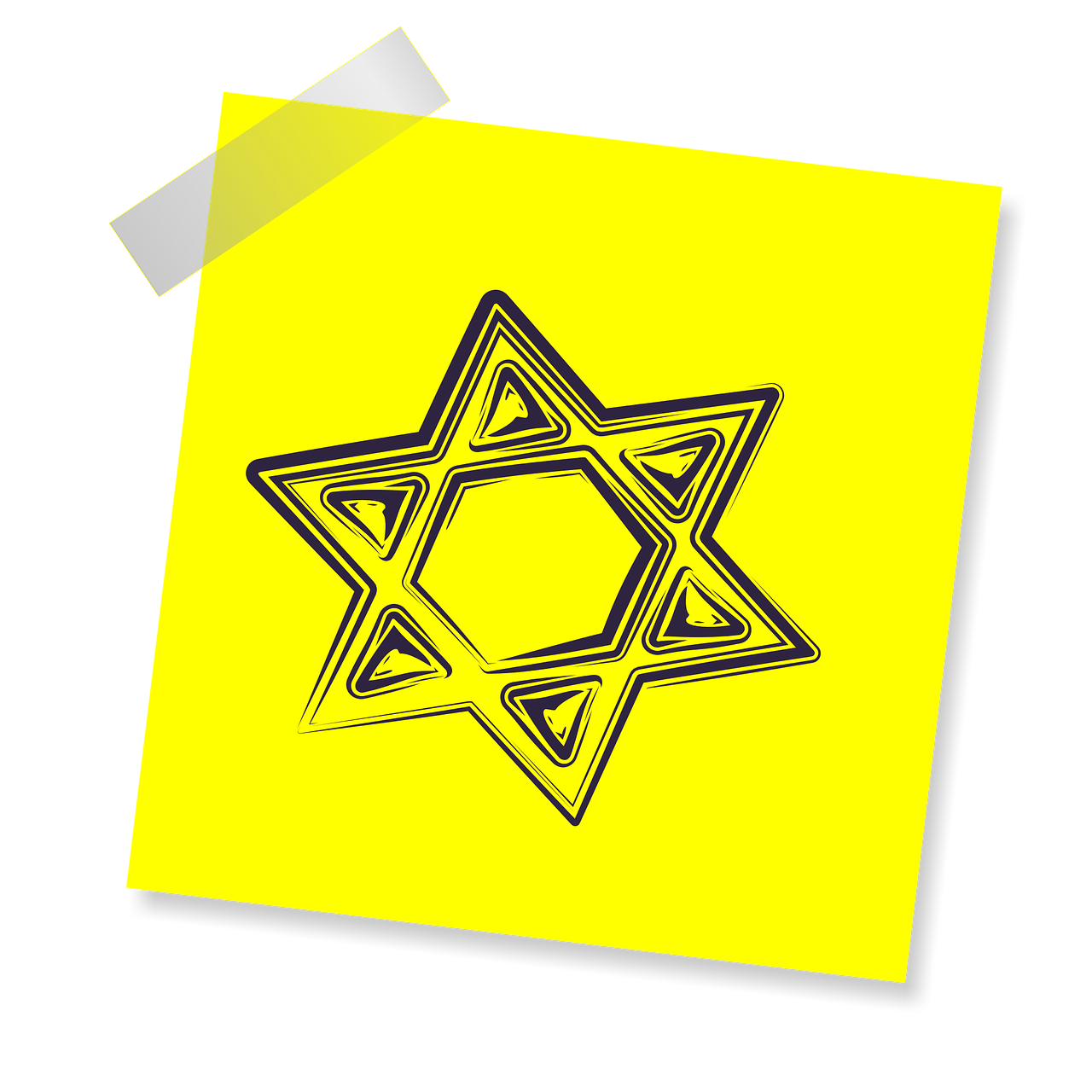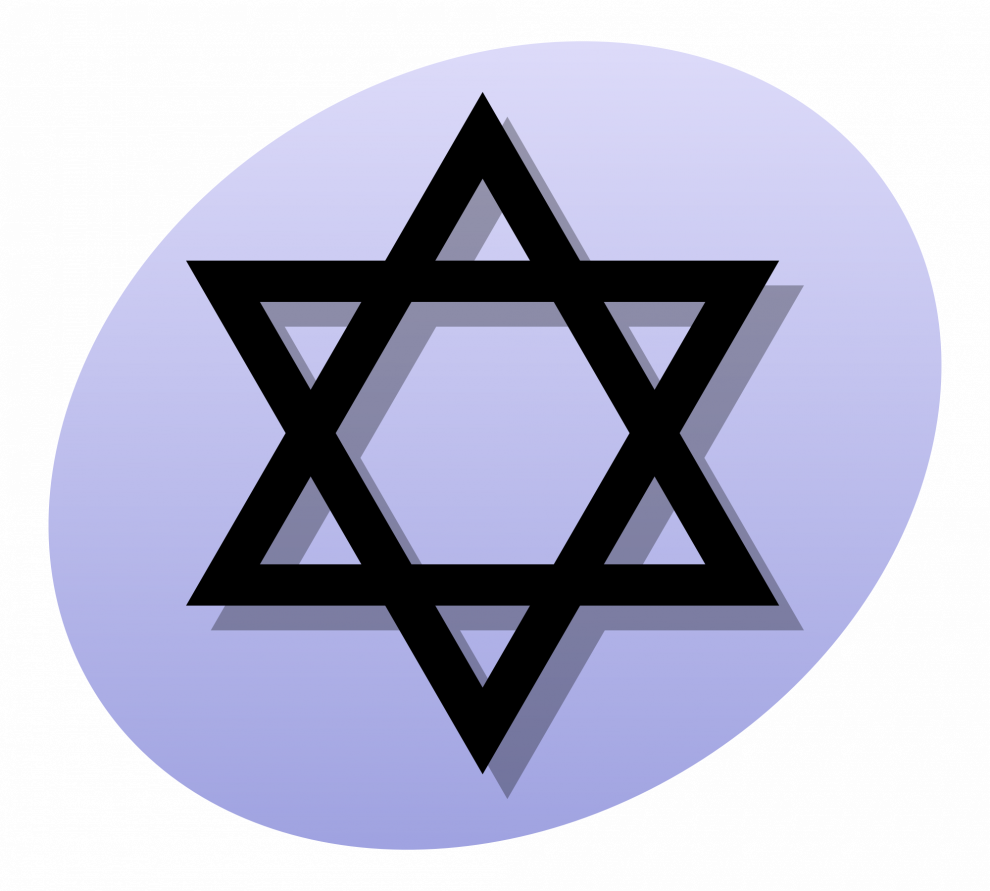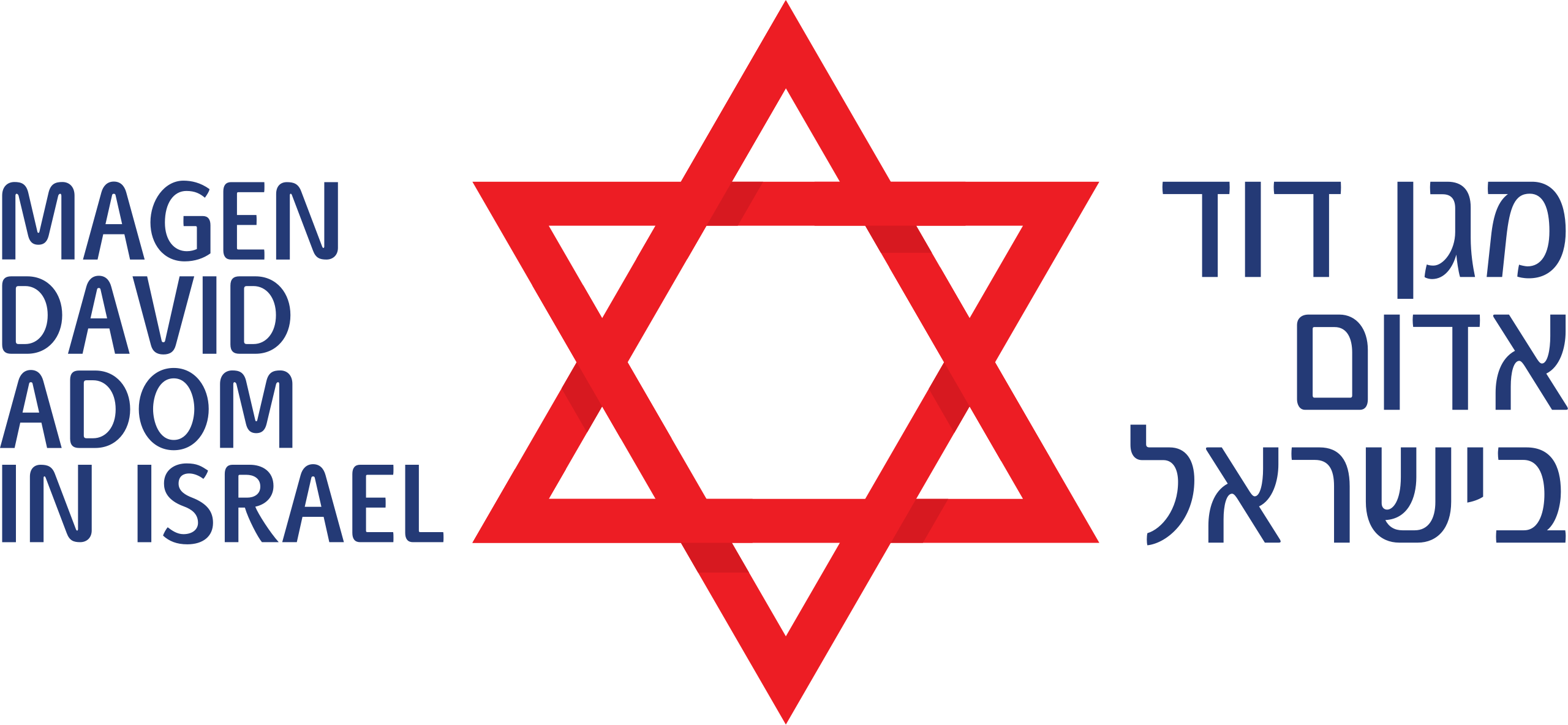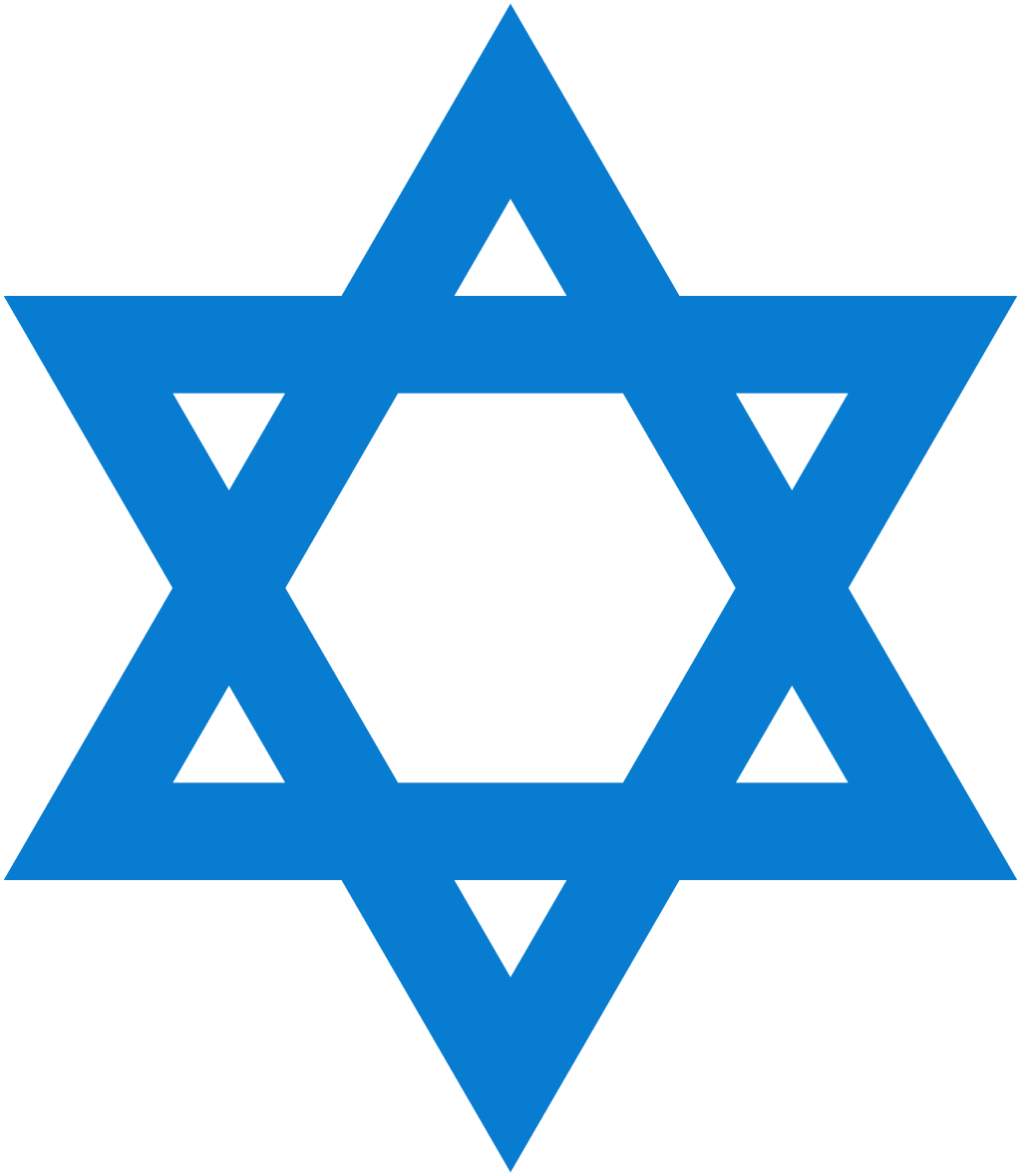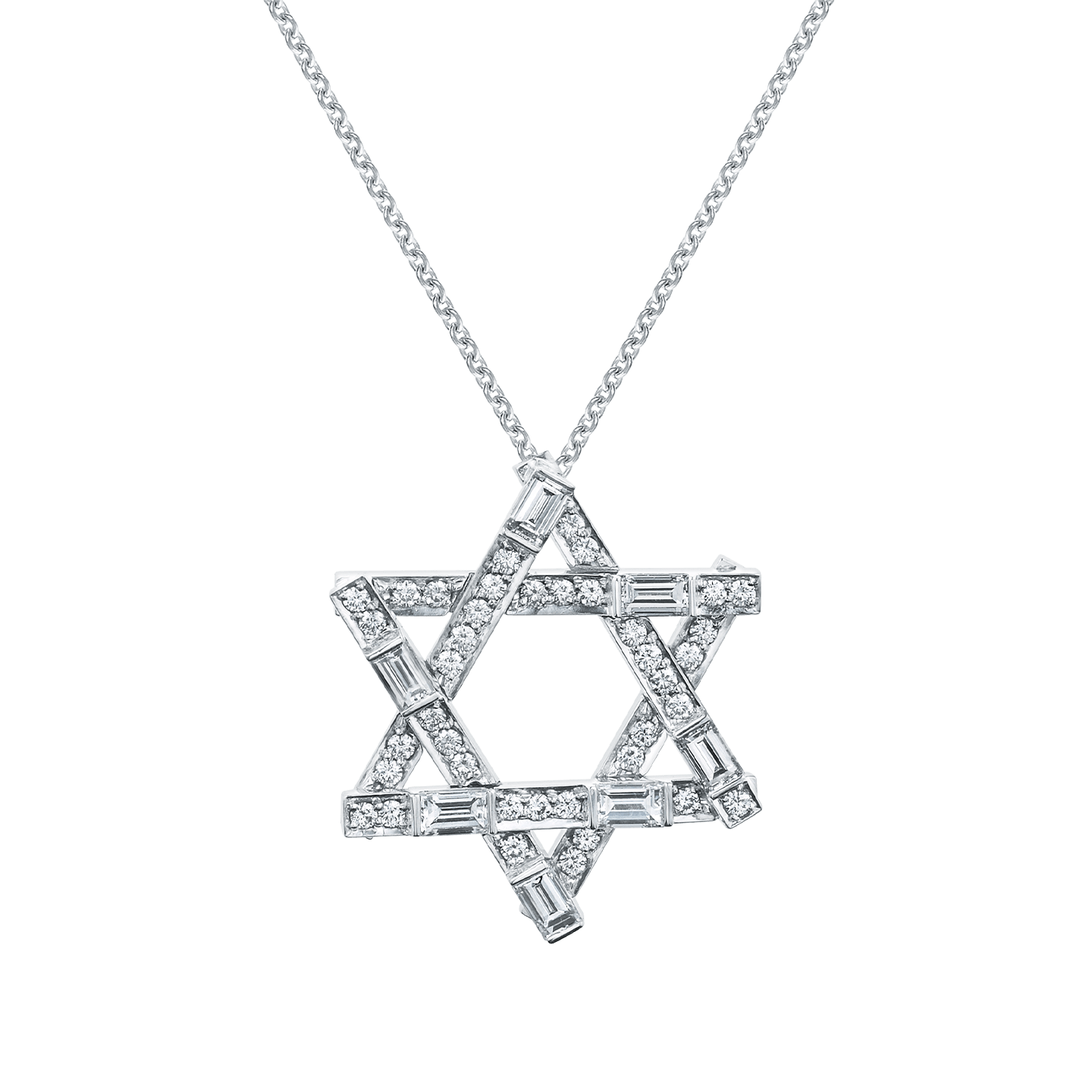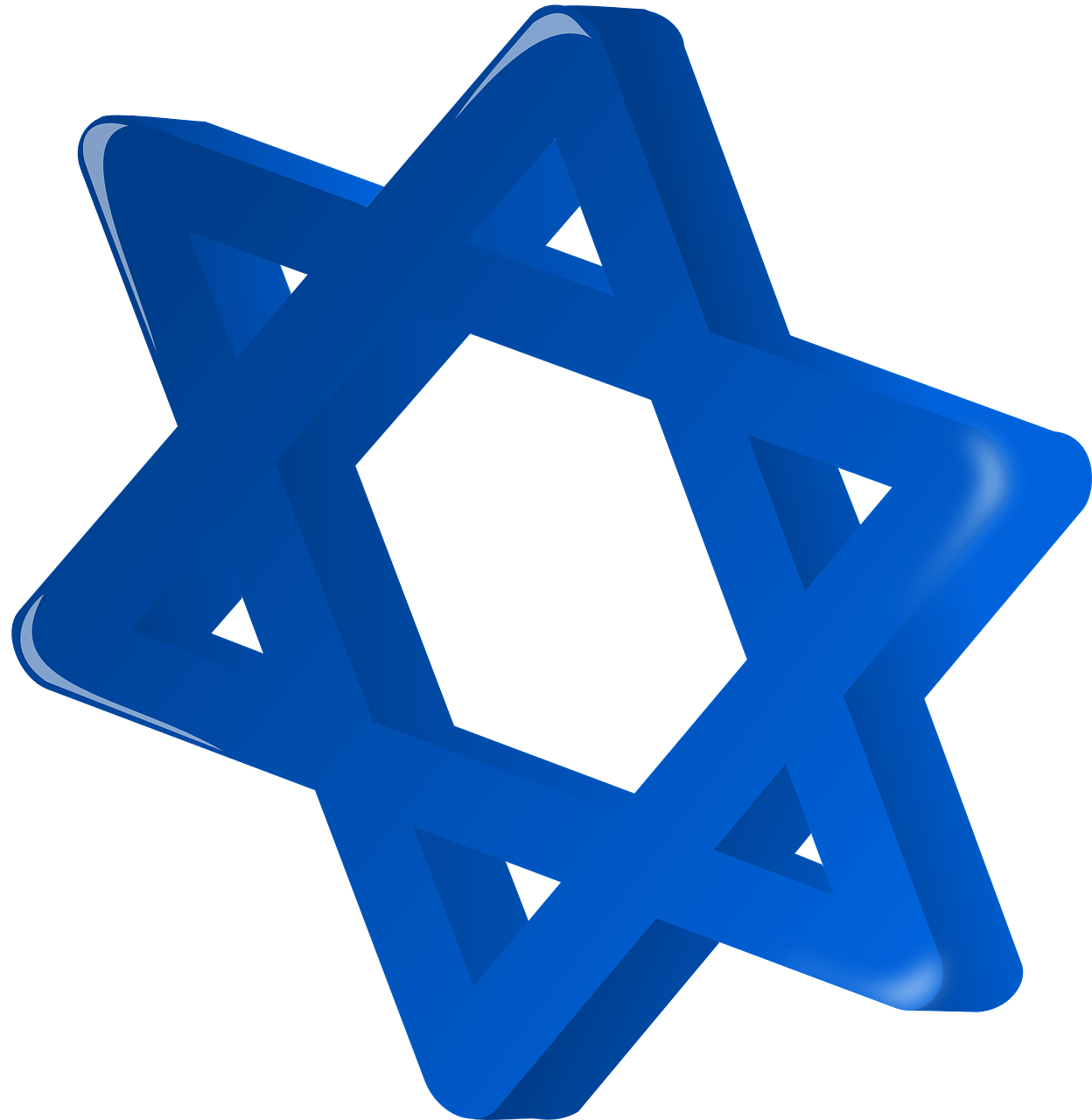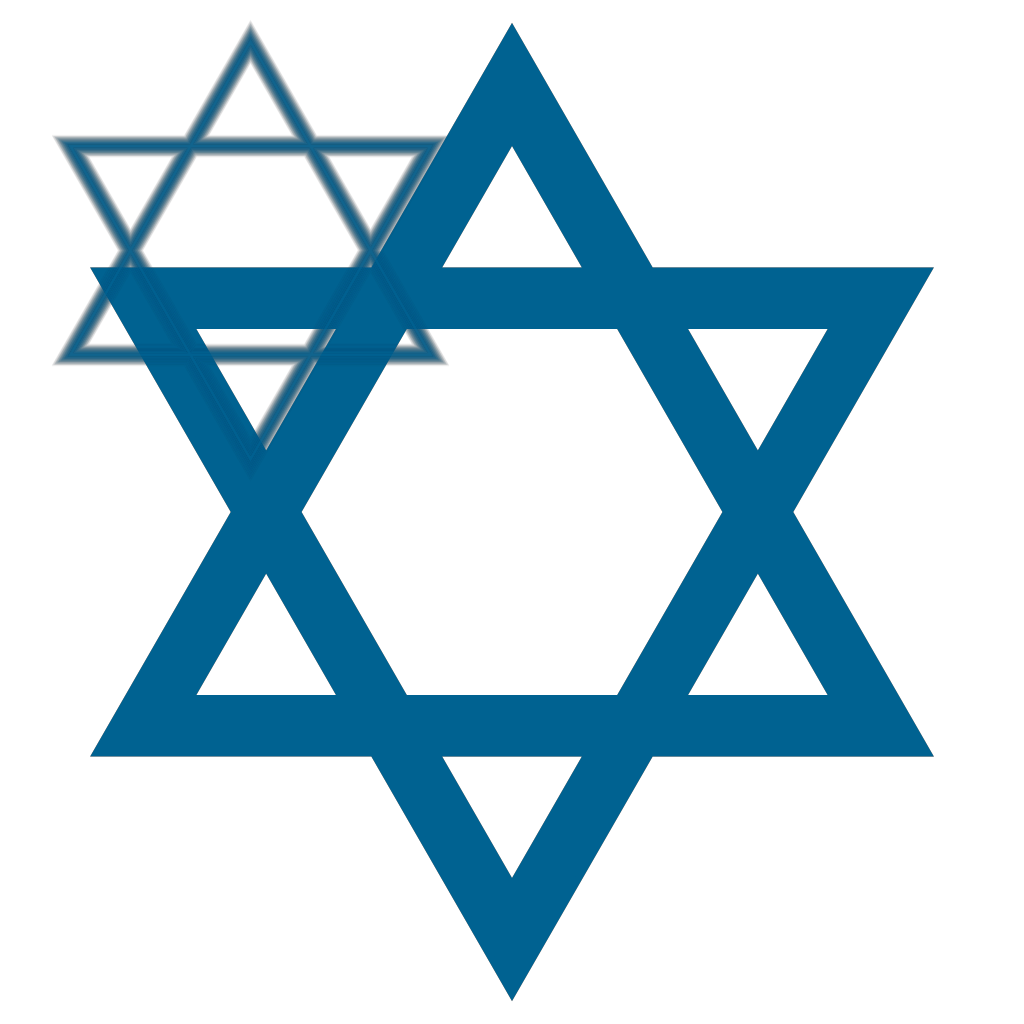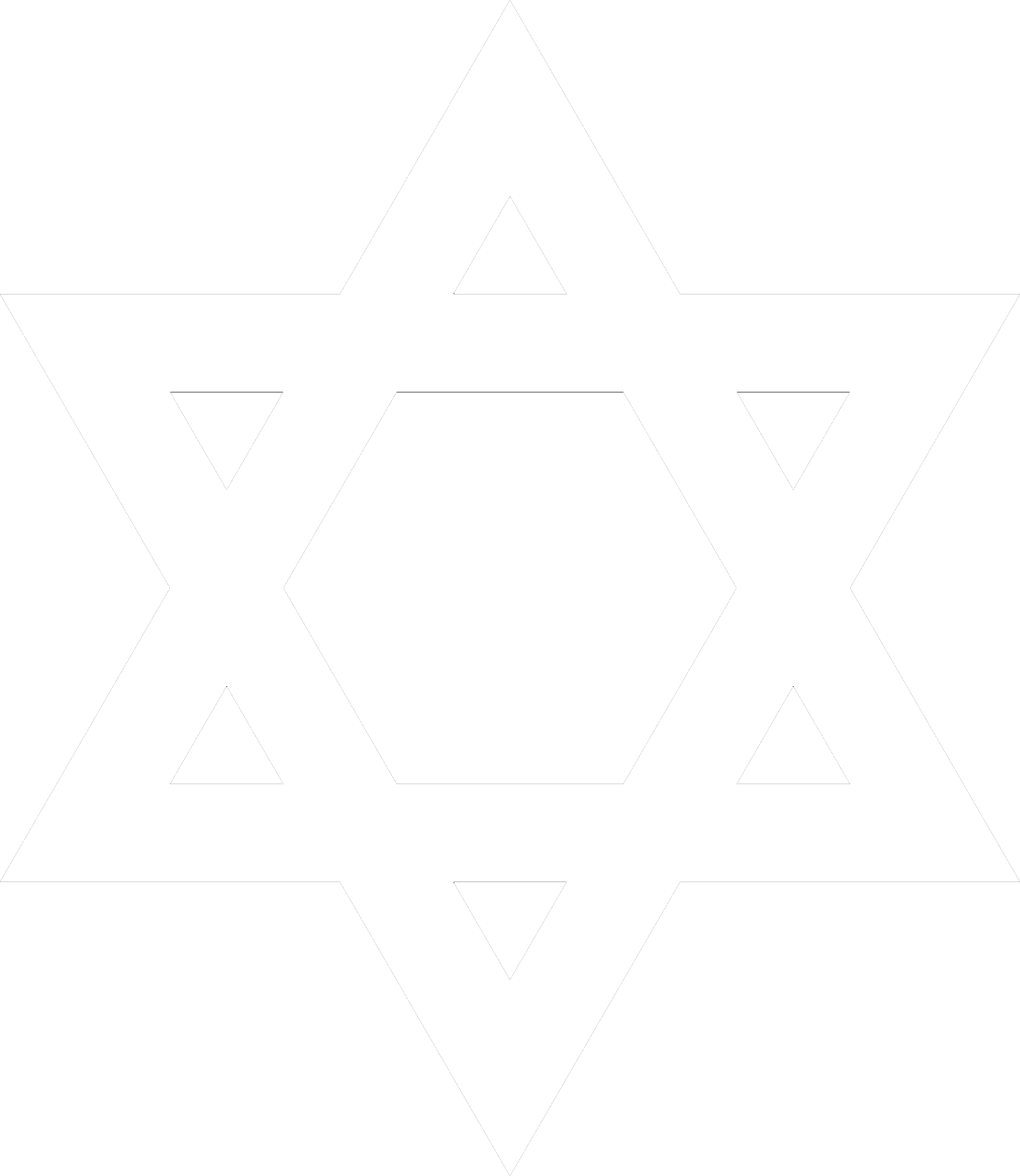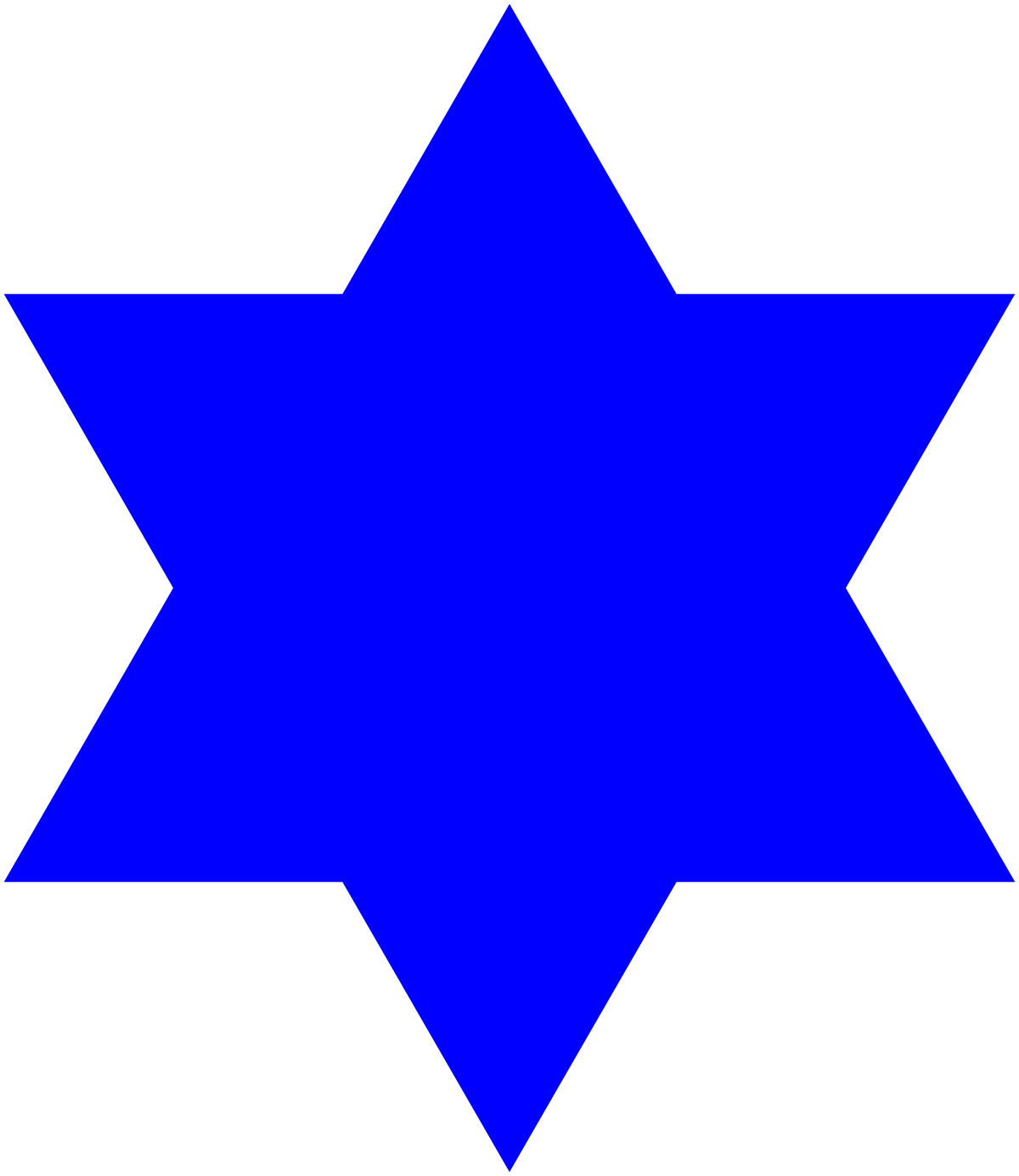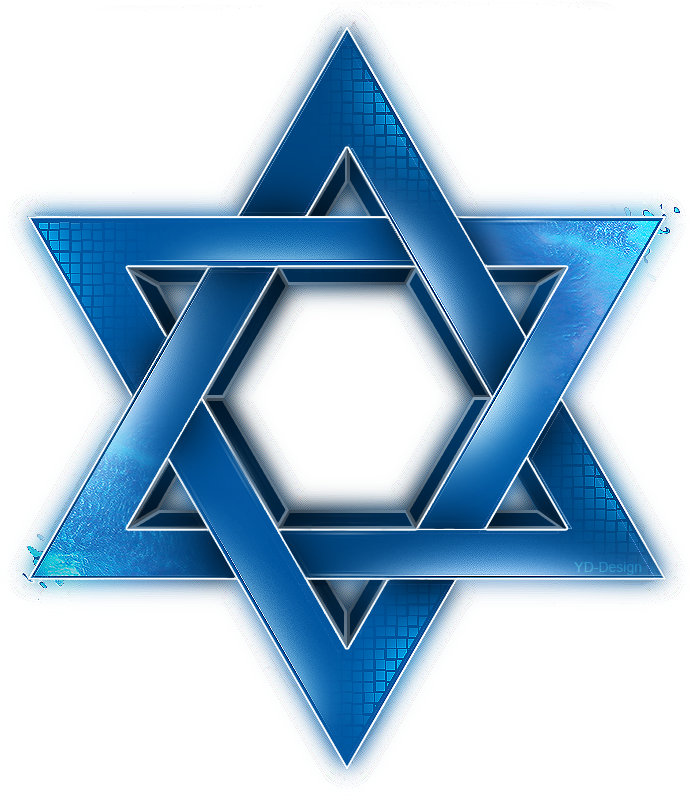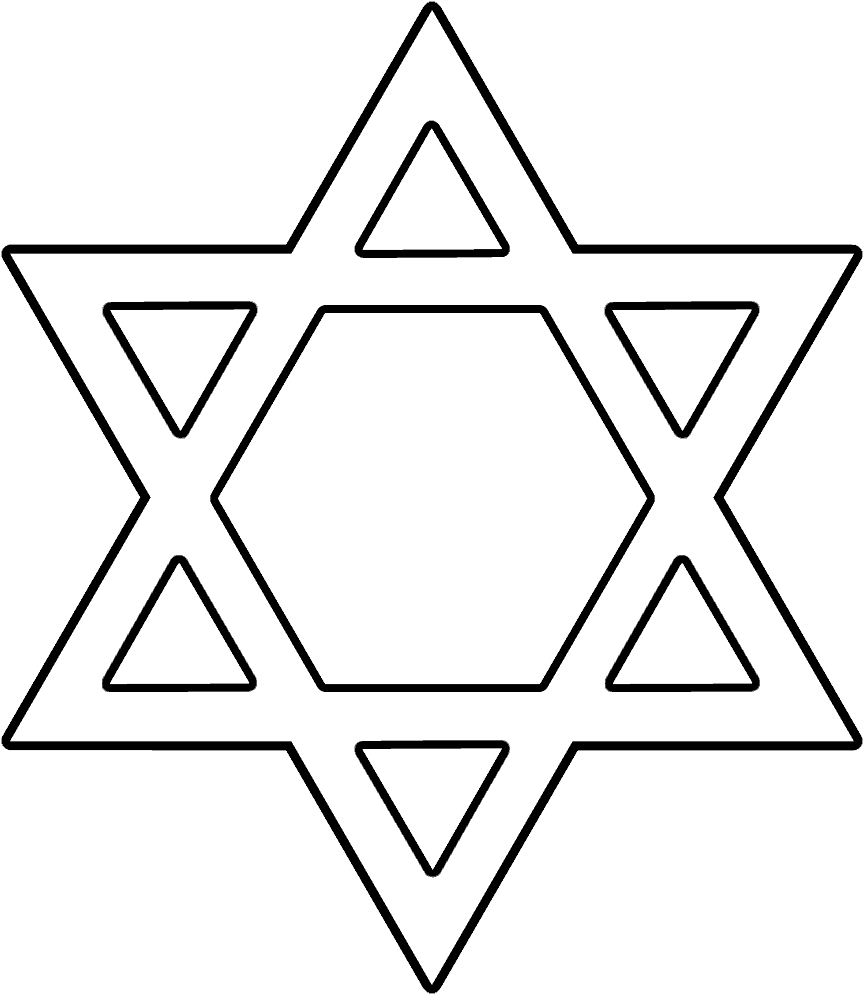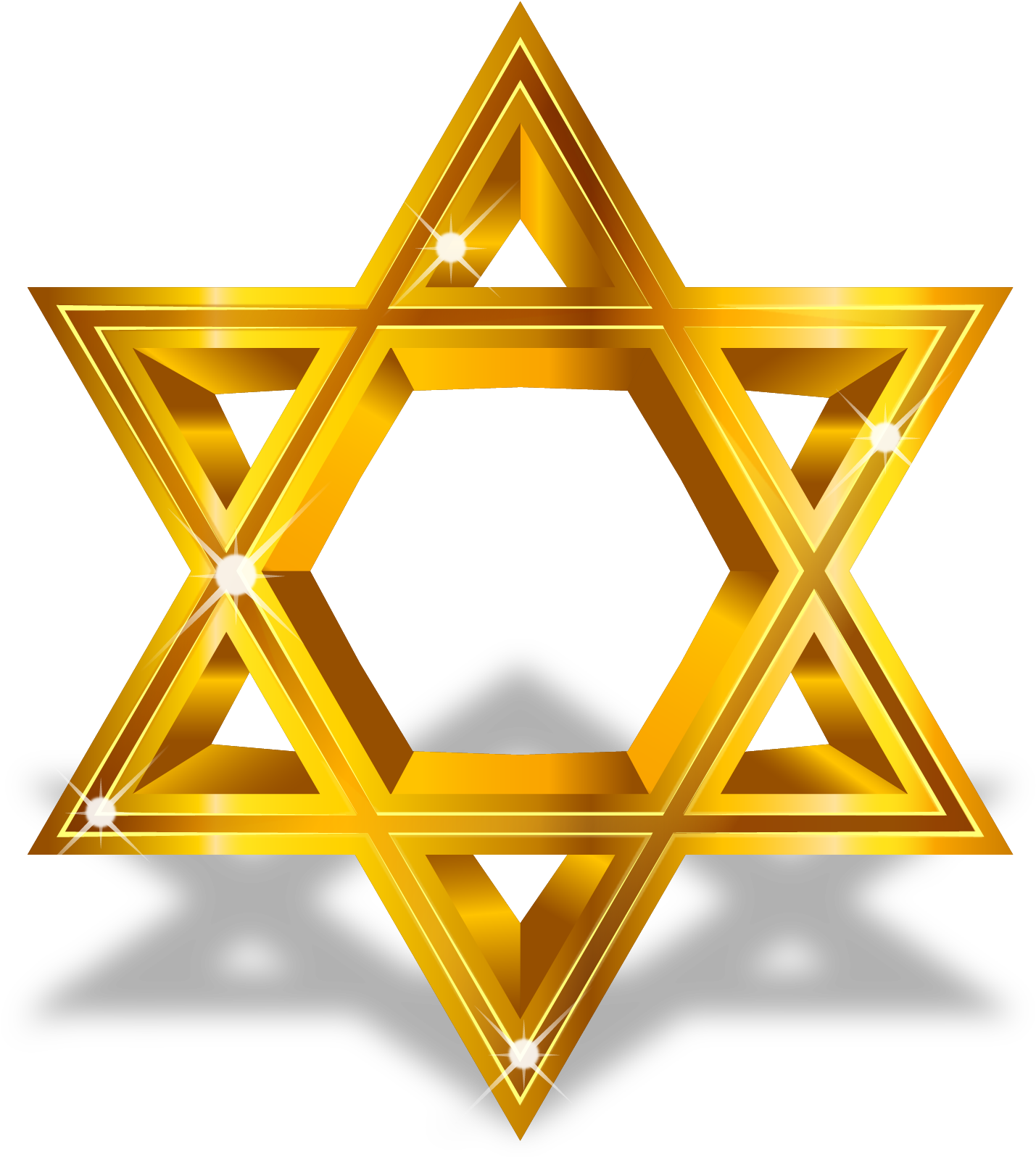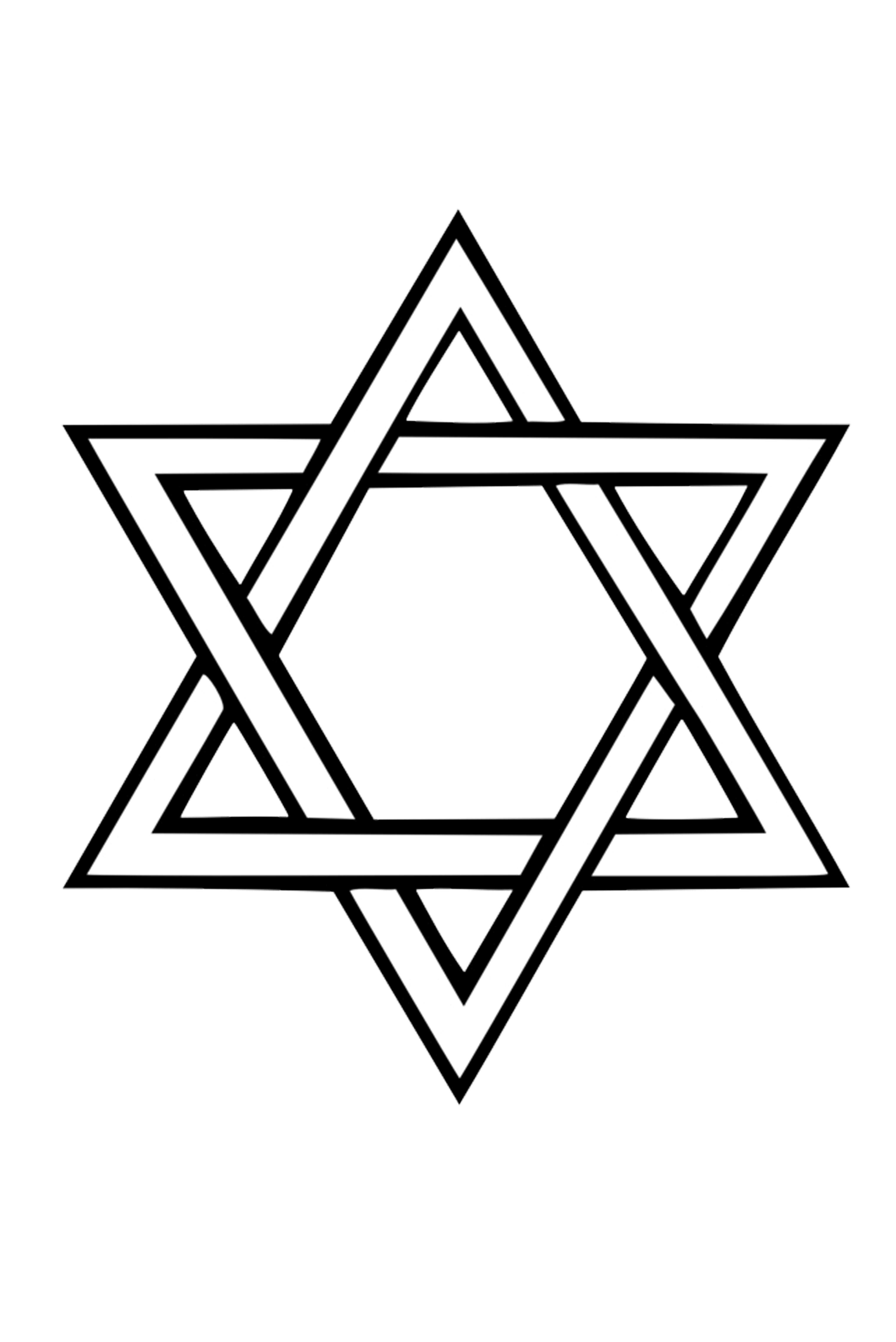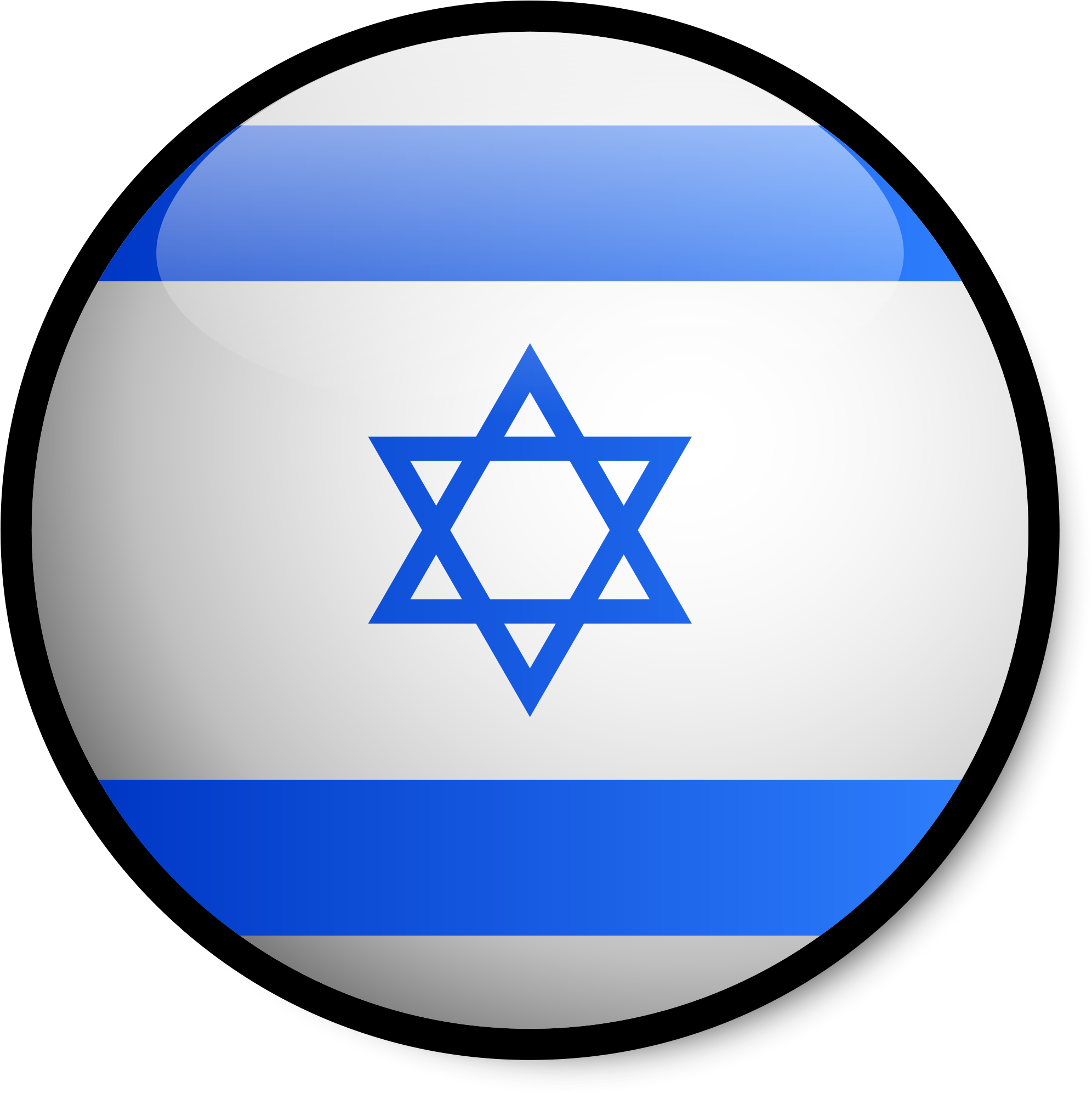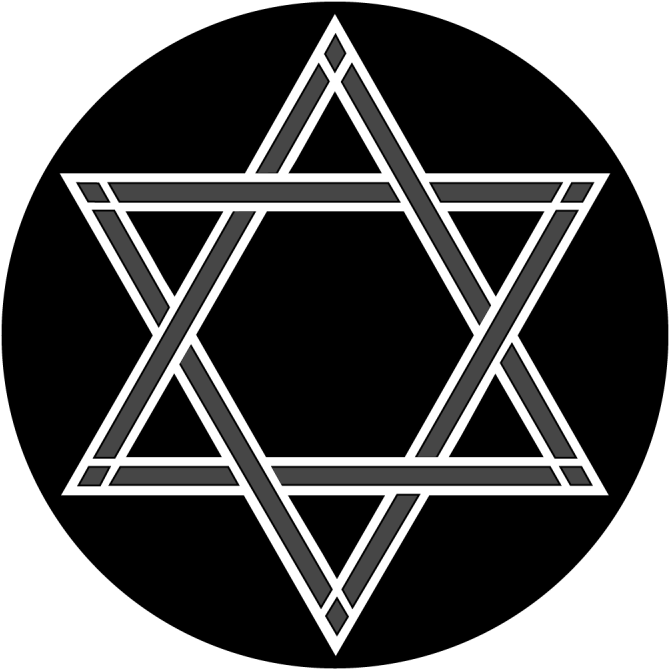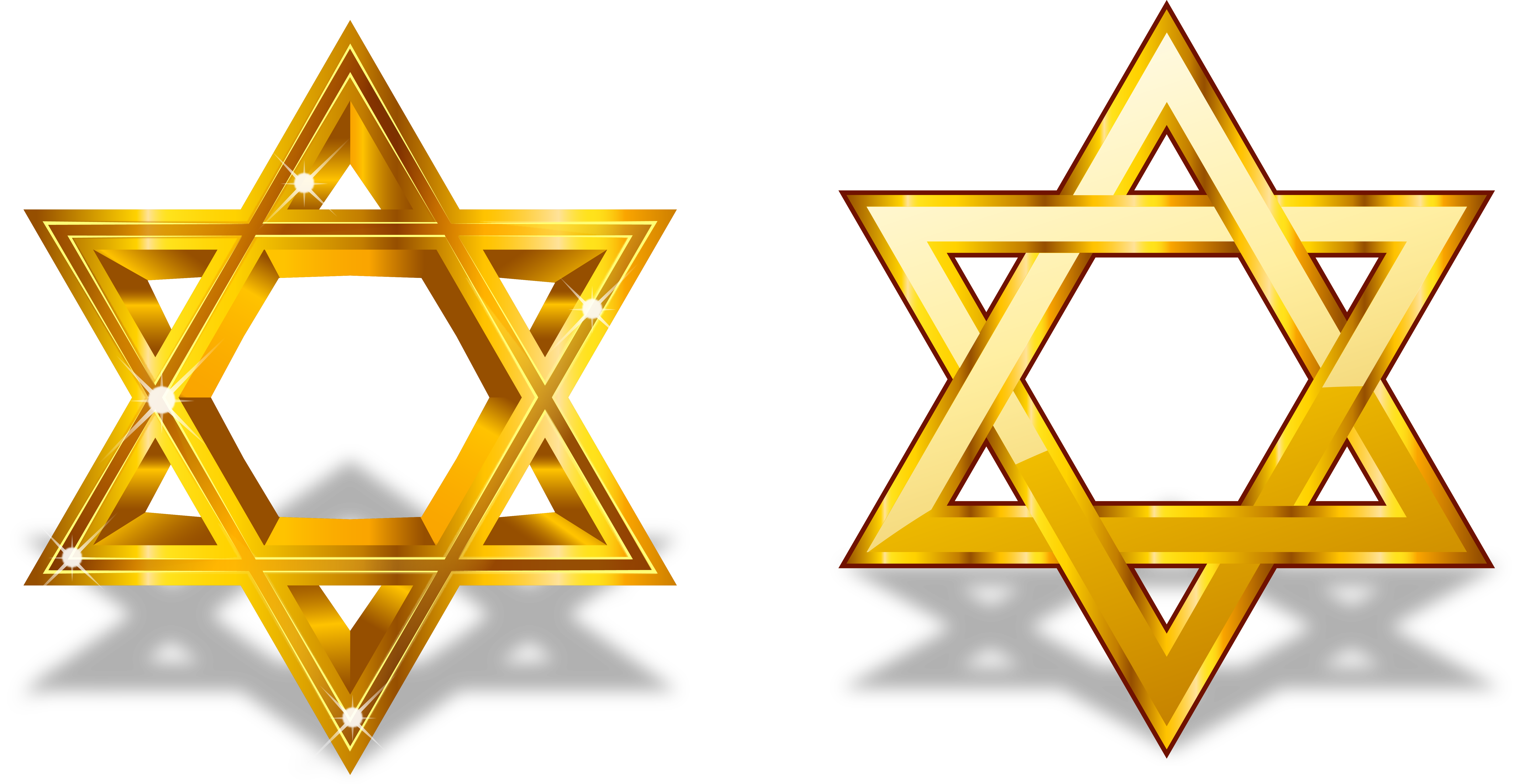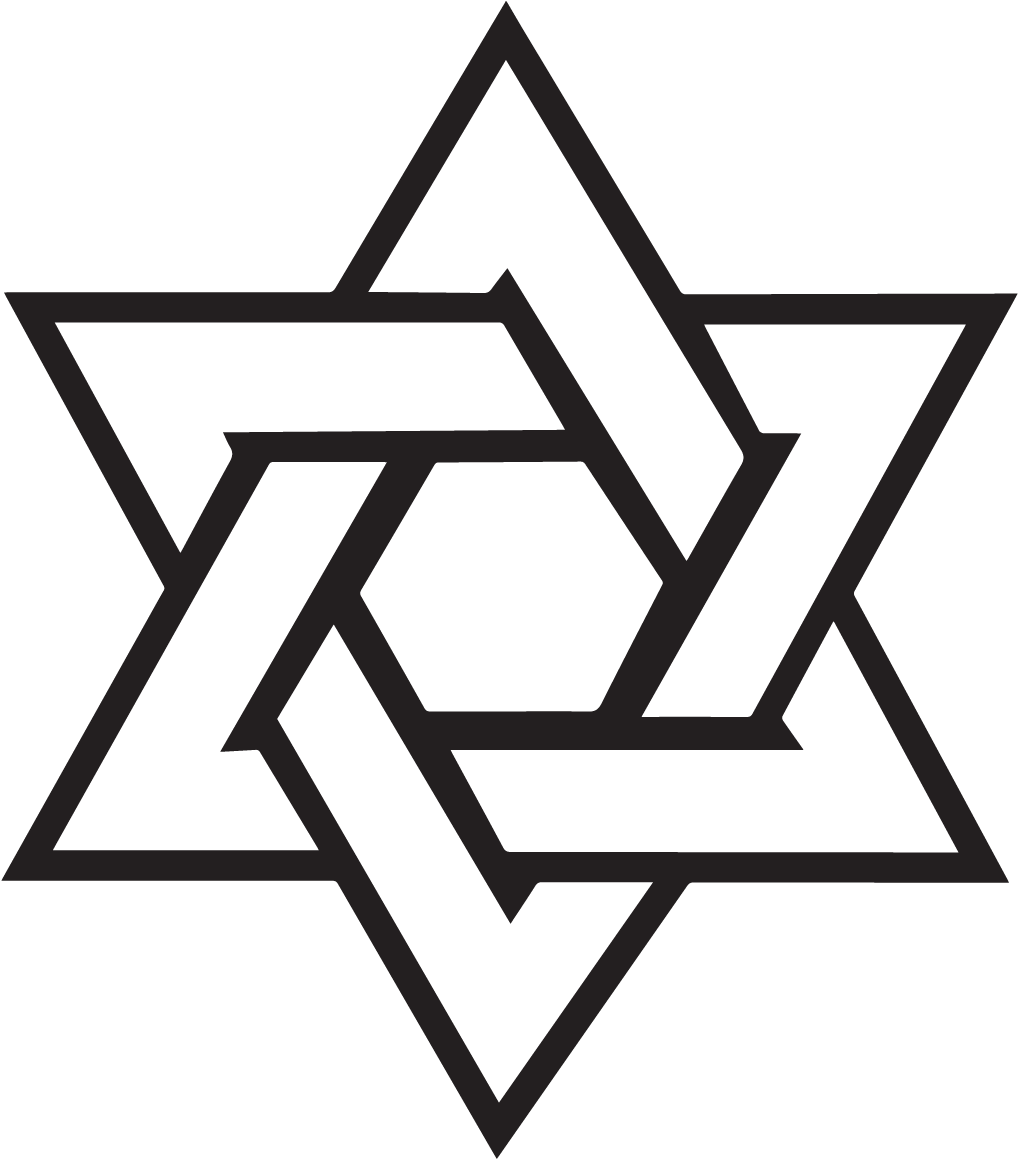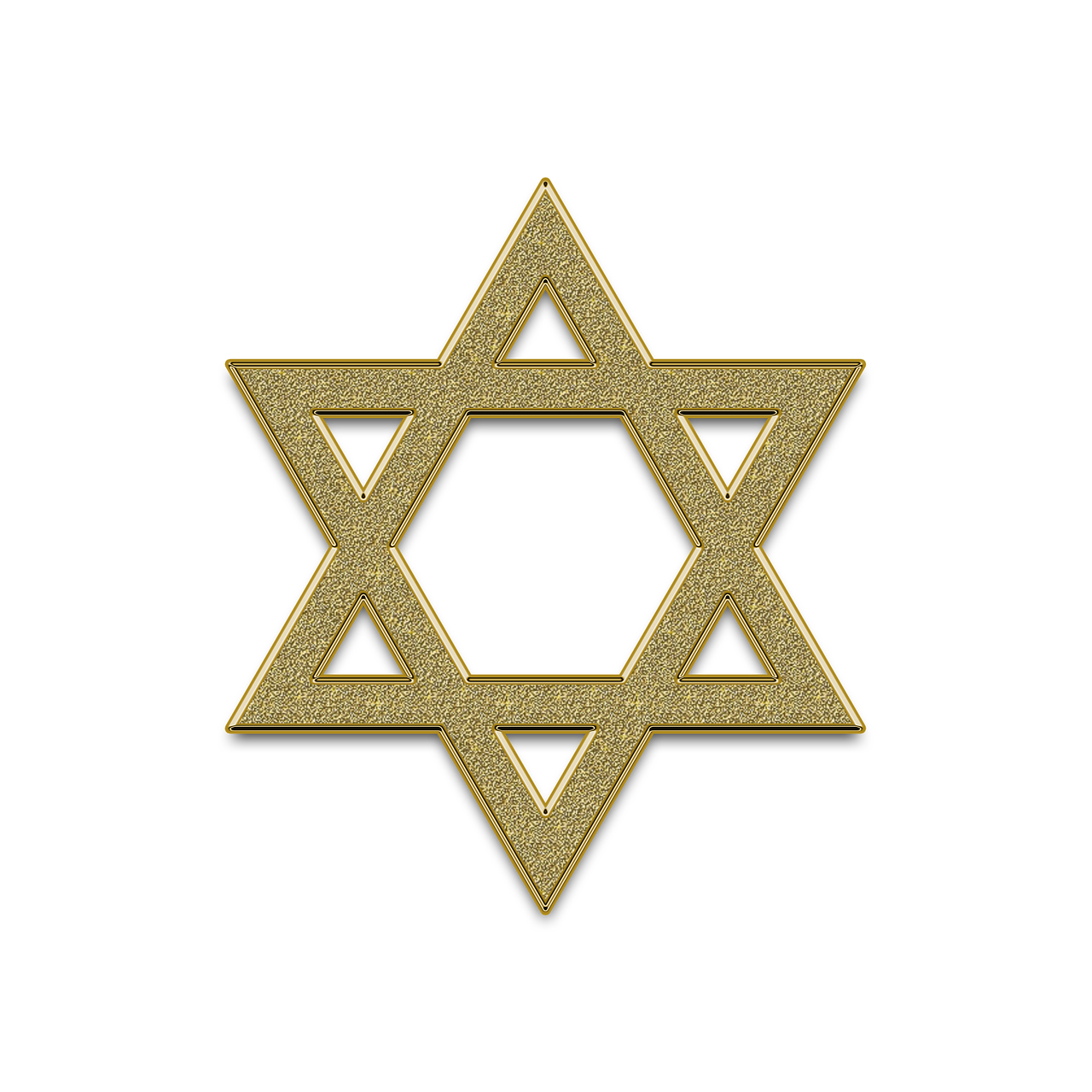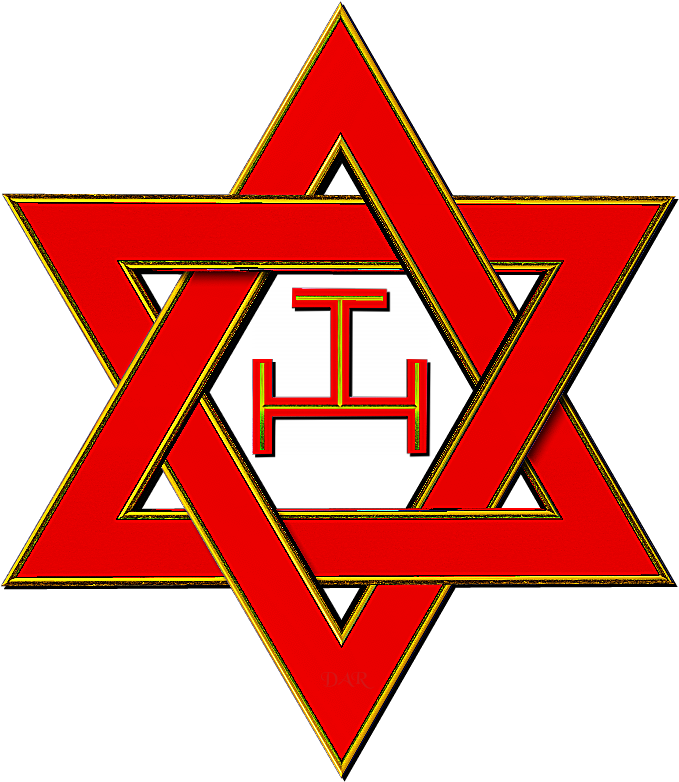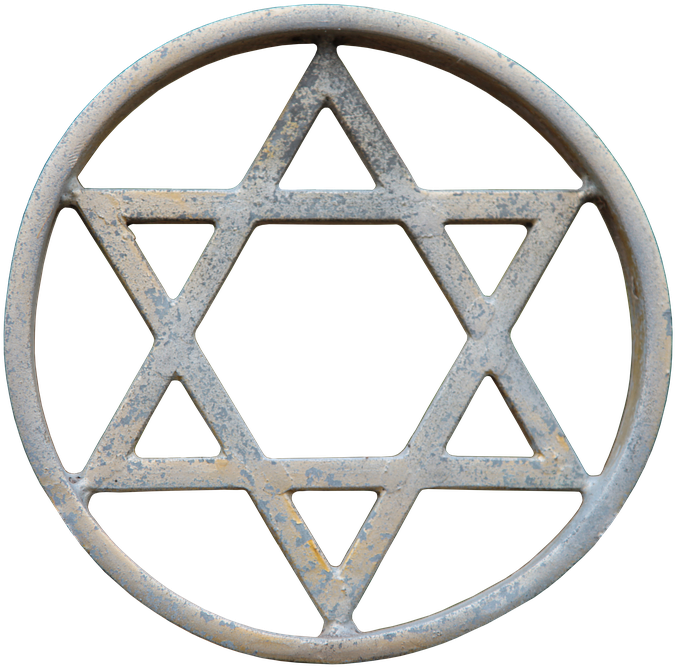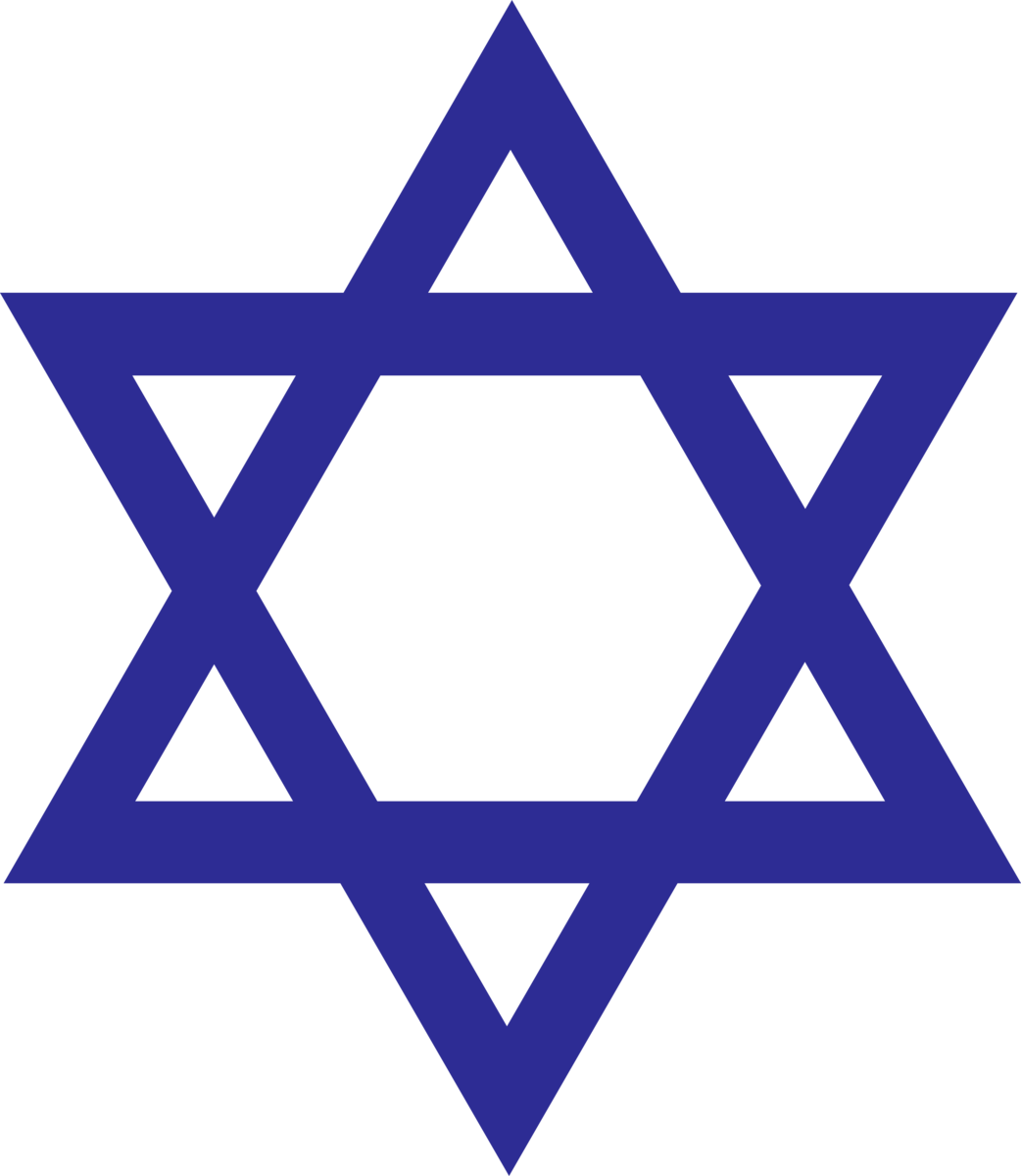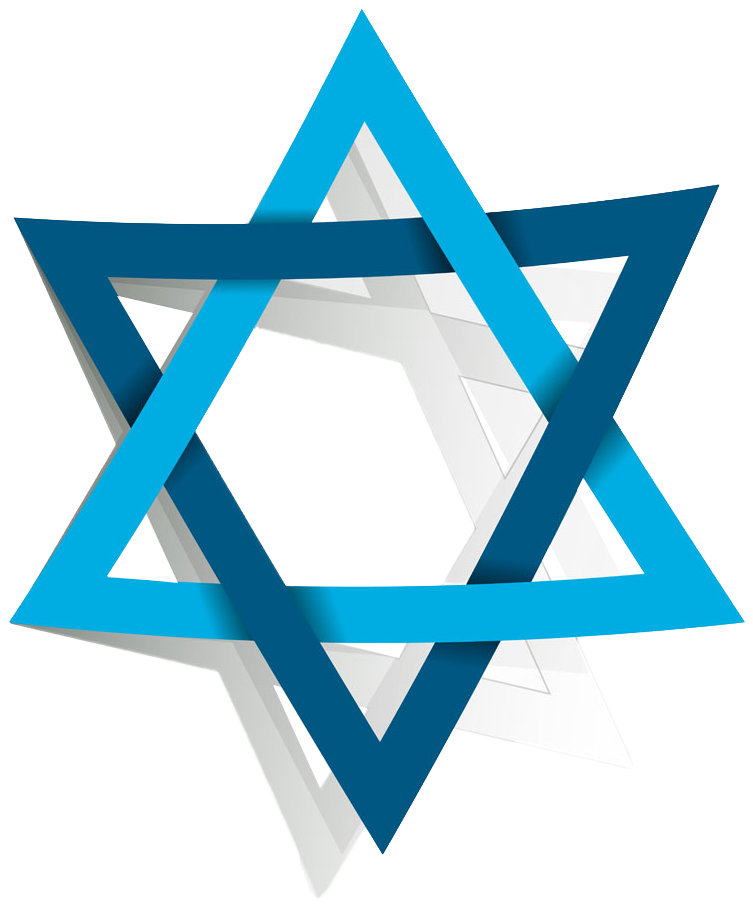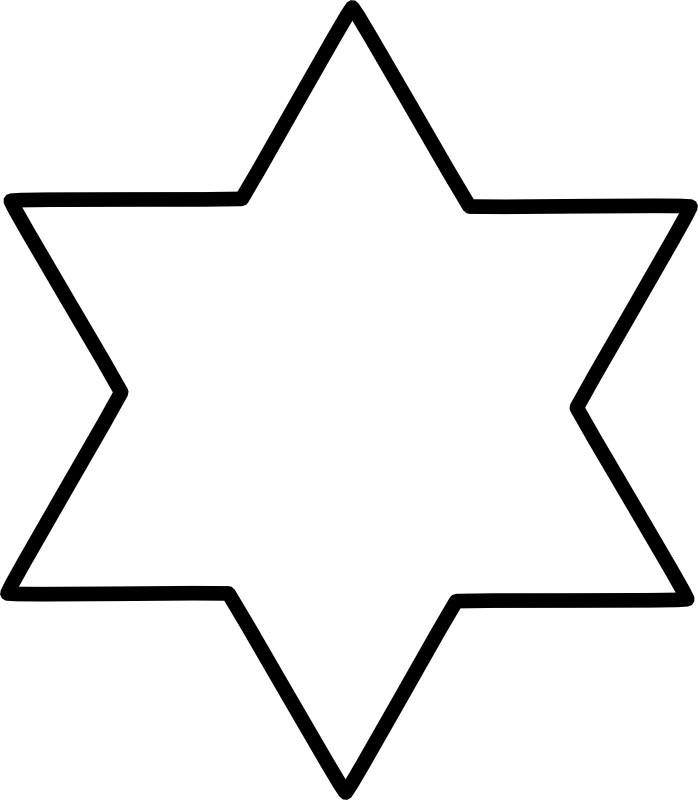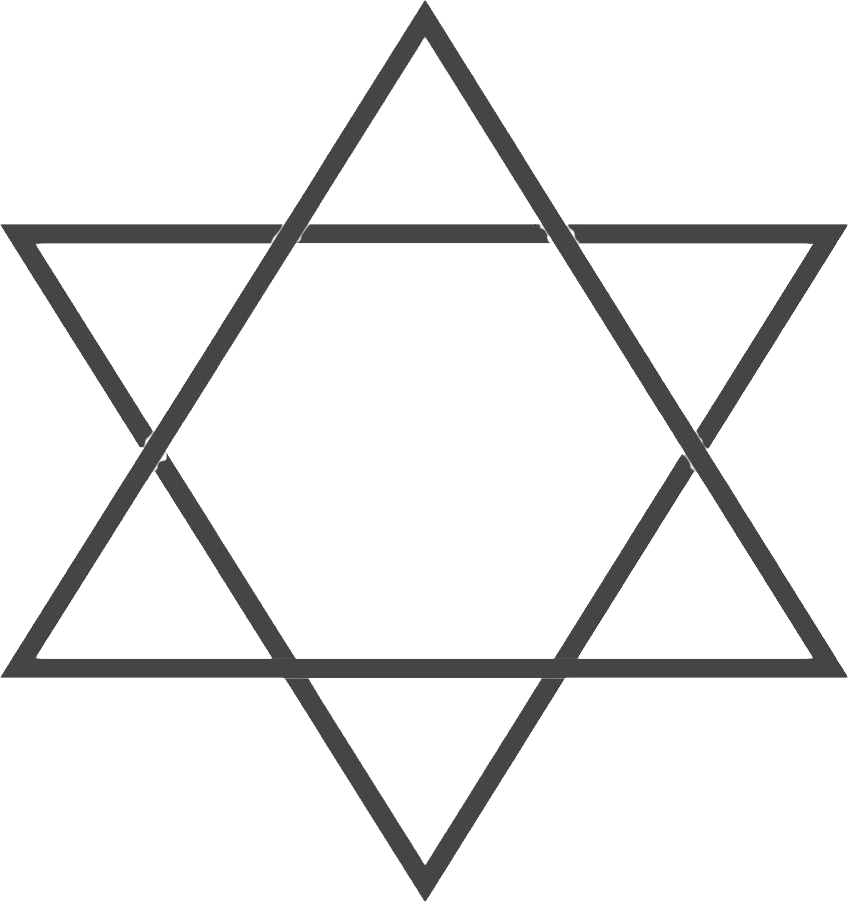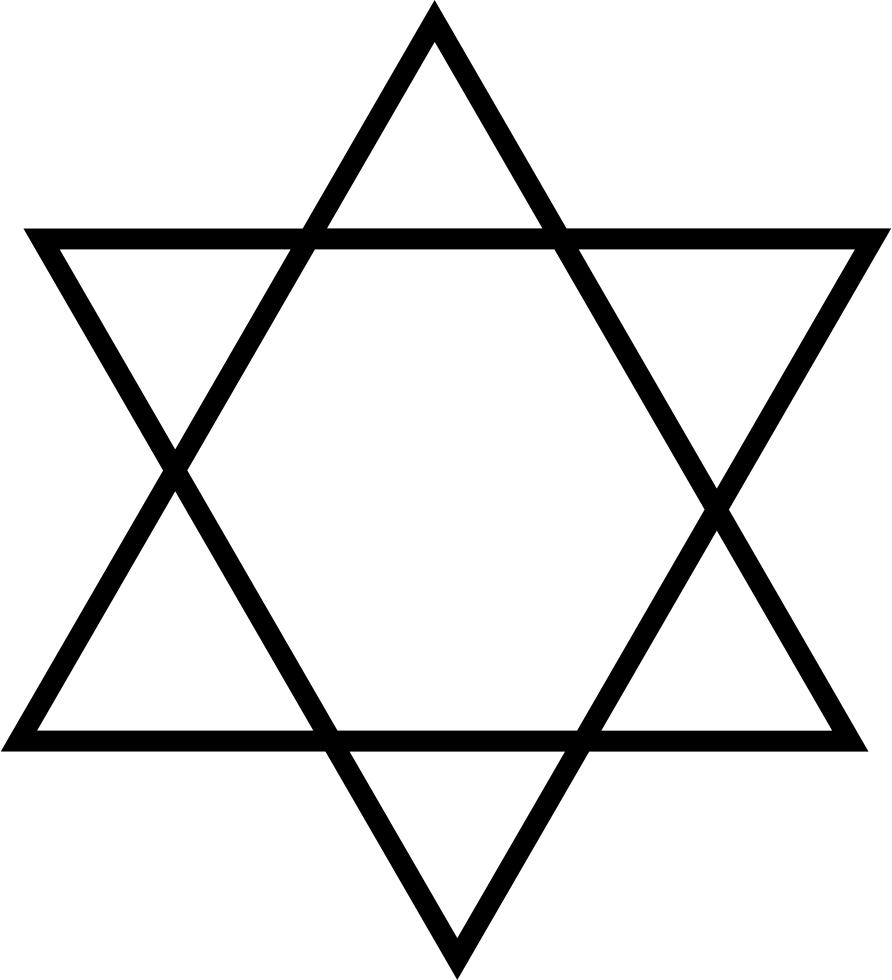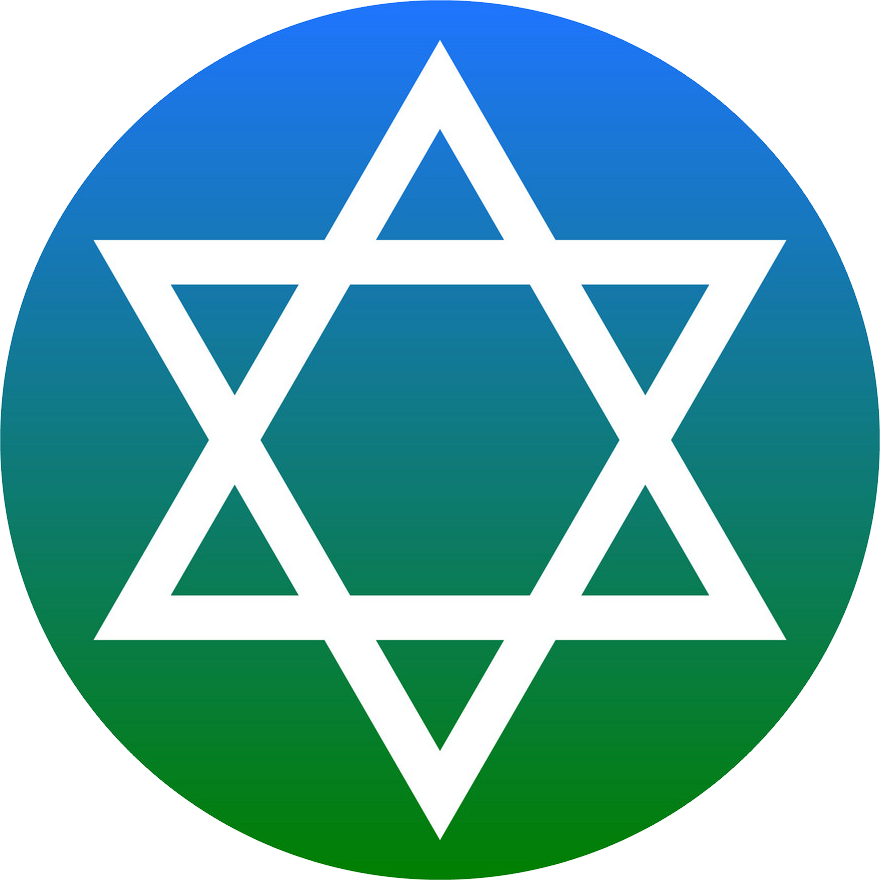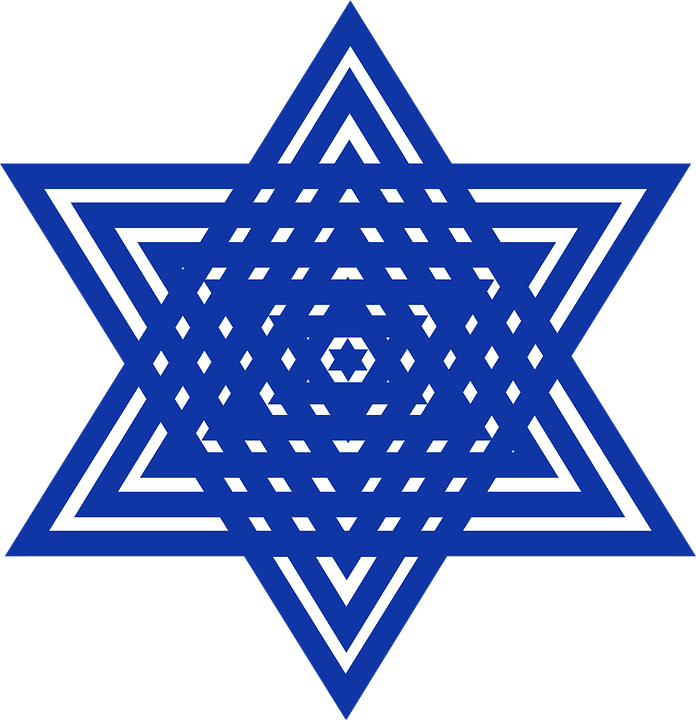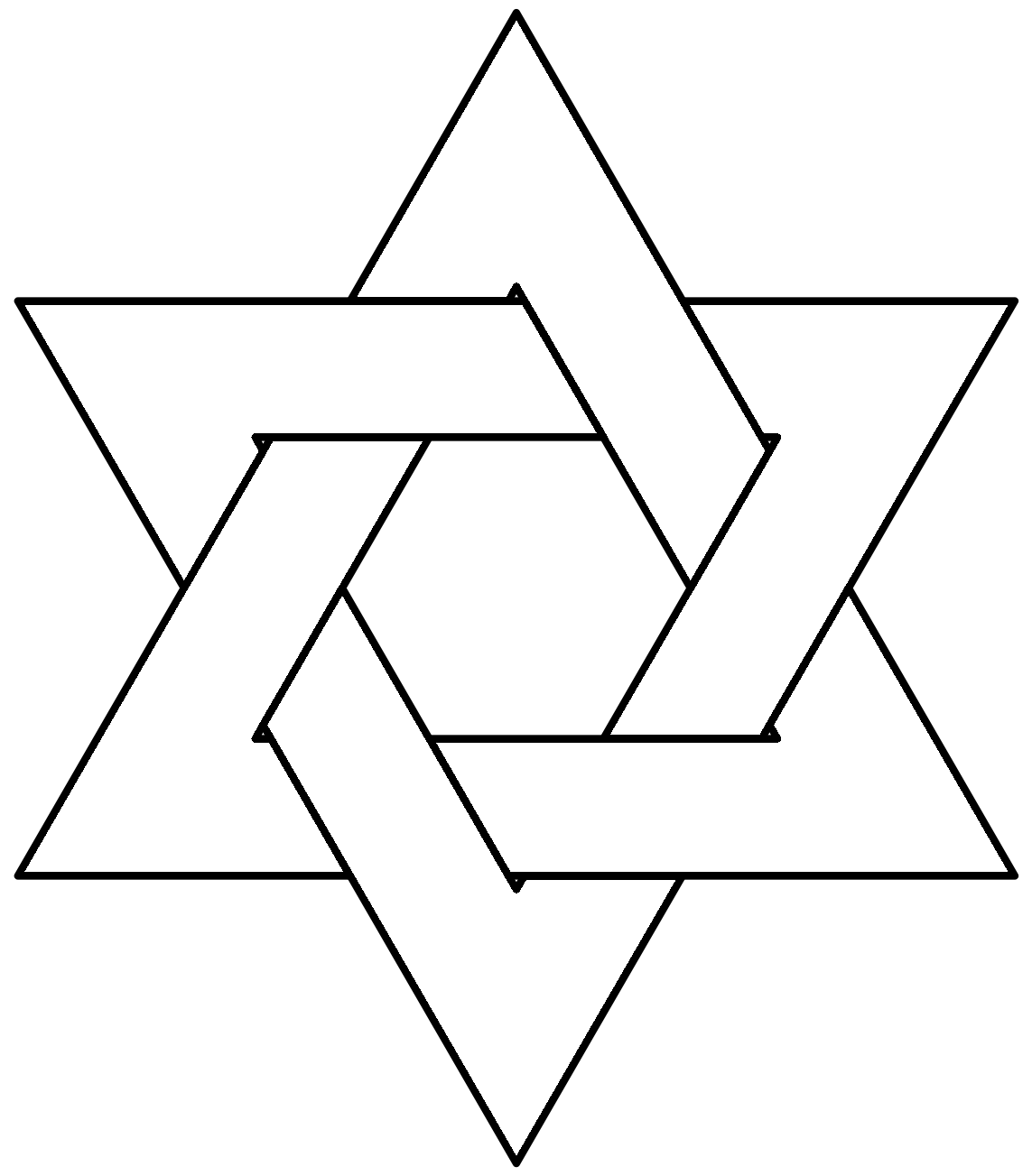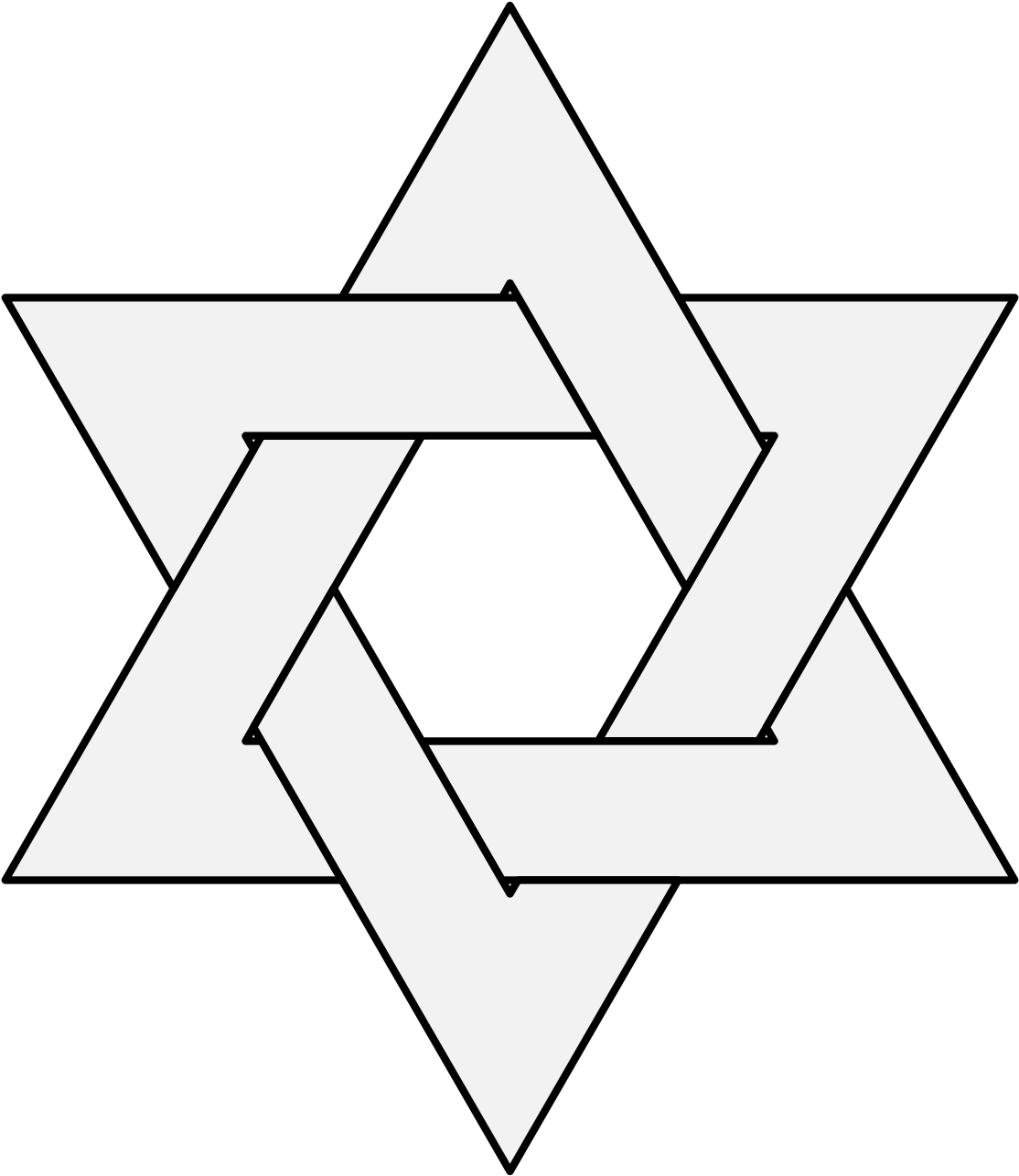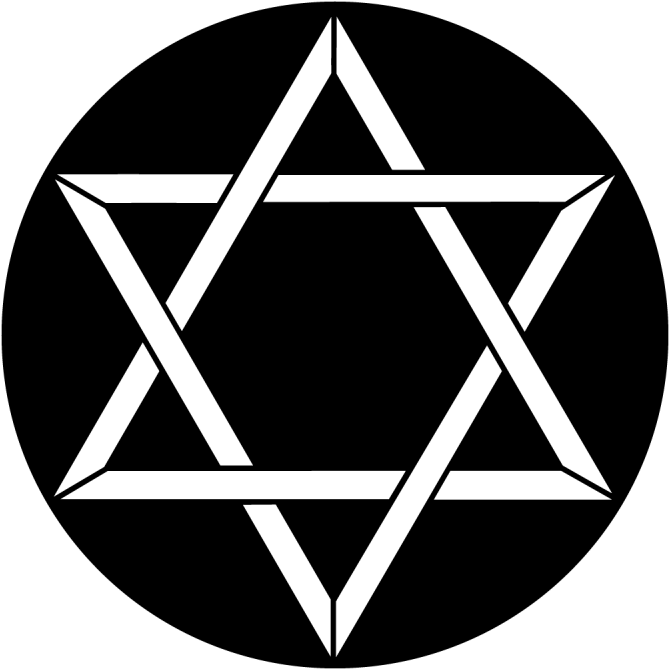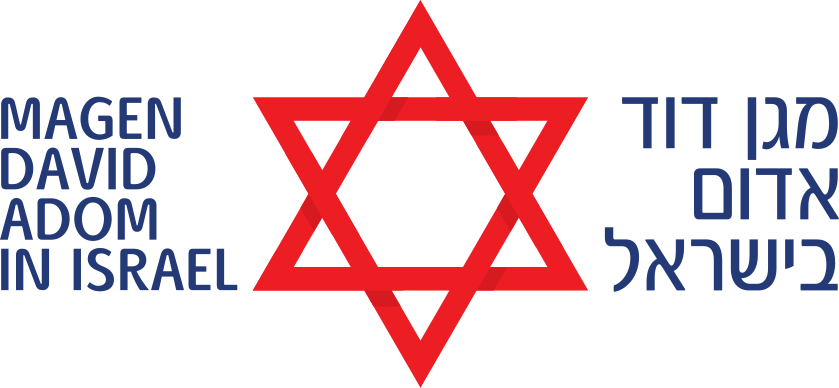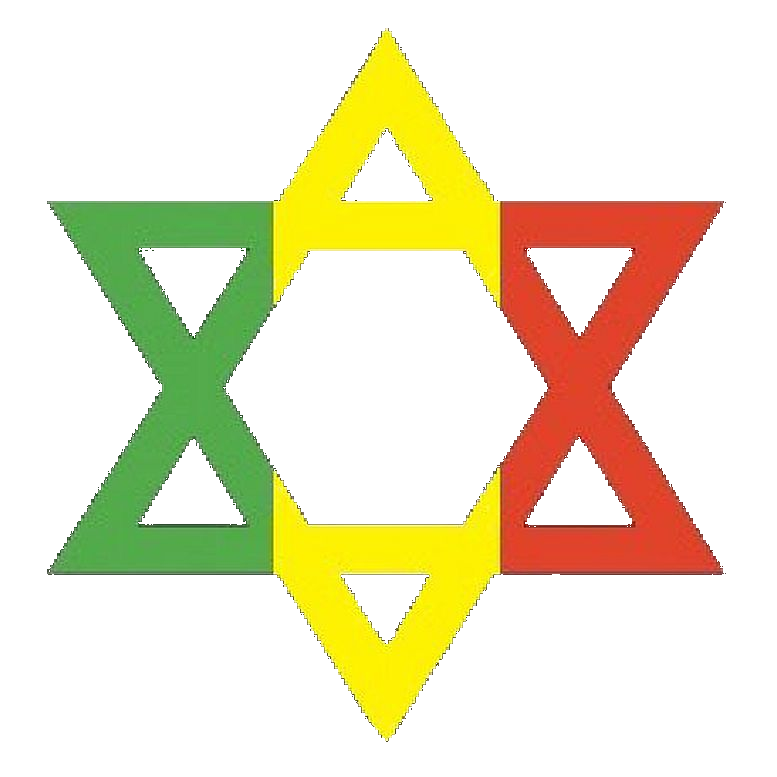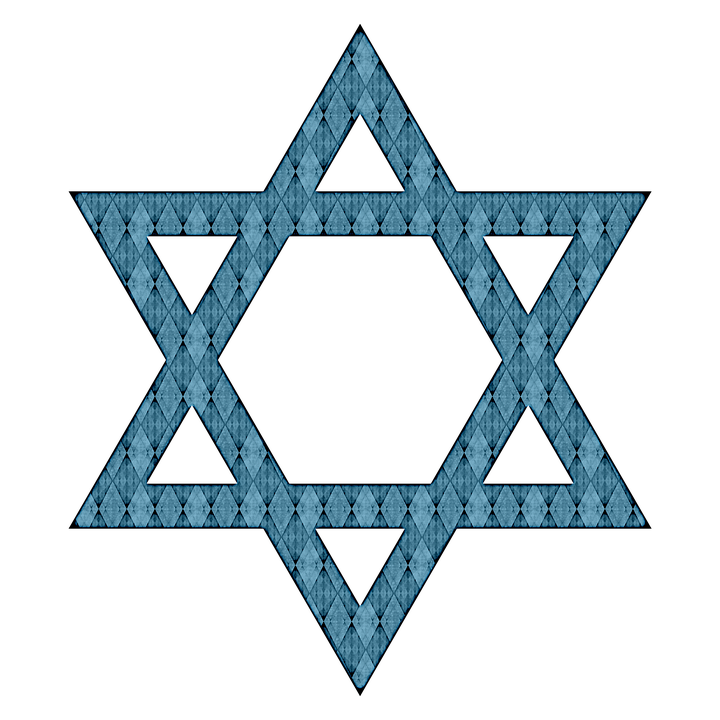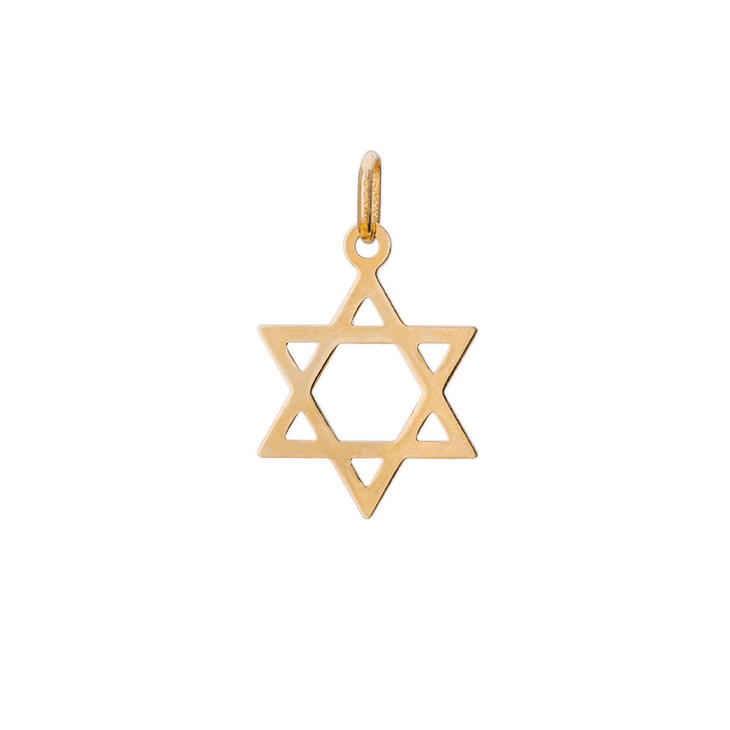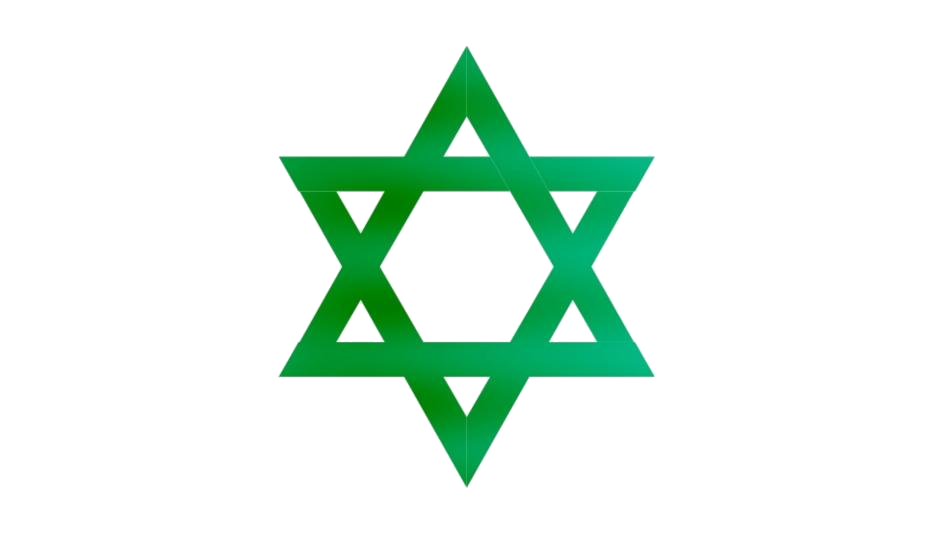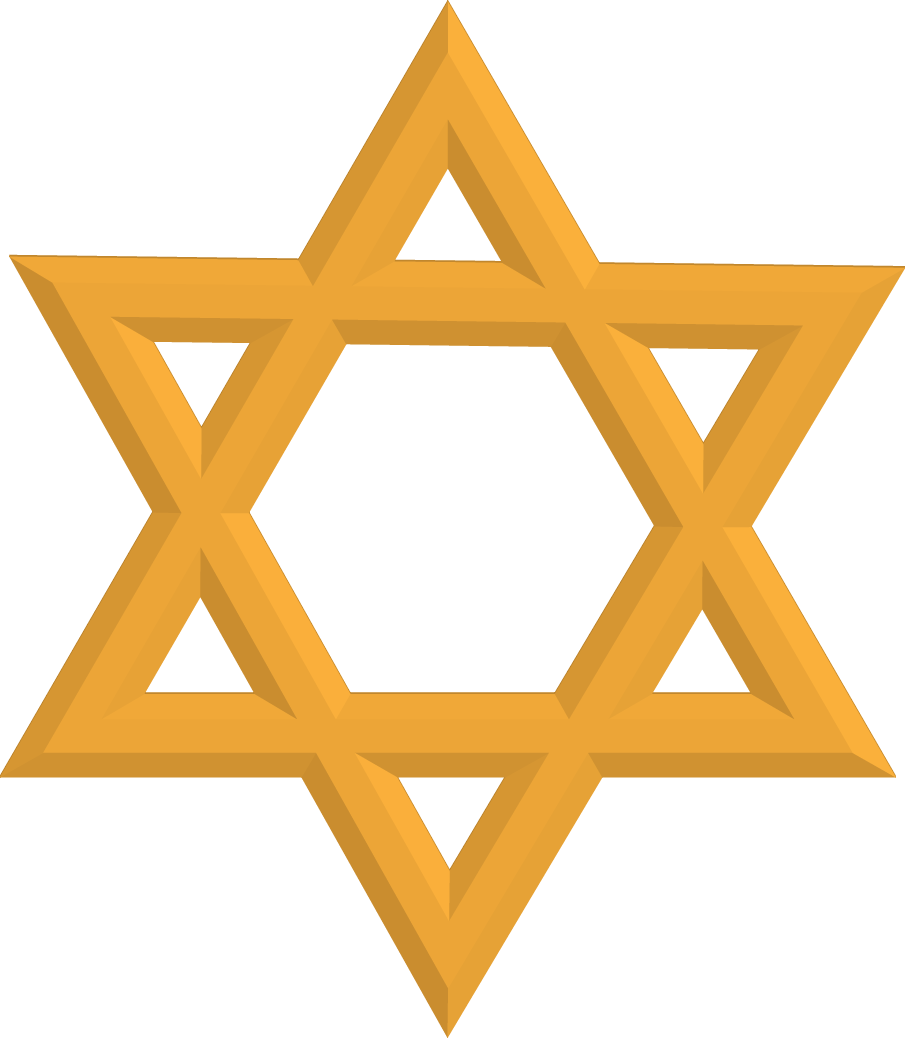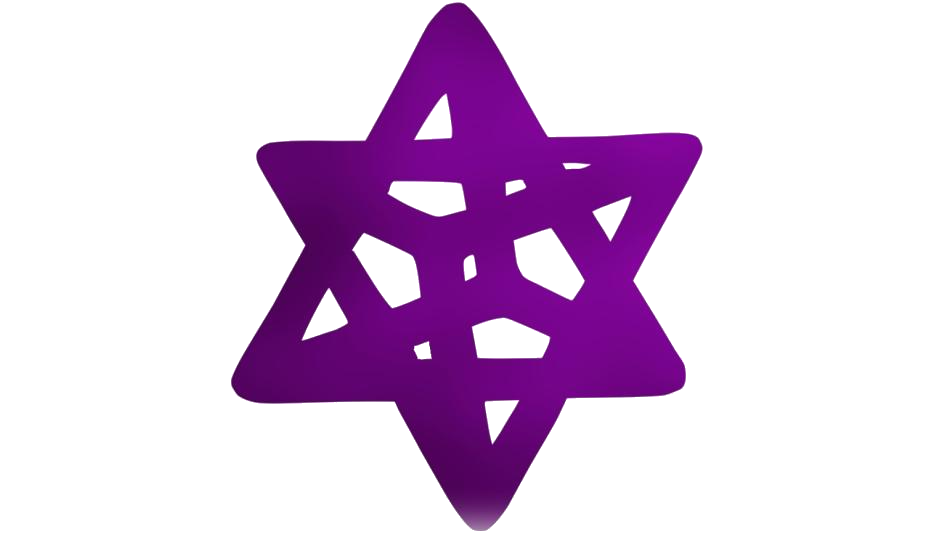Download top and best high-quality free Magen David PNG Transparent Images backgrounds available in various sizes. To view the full PNG size resolution click on any of the below image thumbnail.
License Info: Creative Commons 4.0 BY-NC
The titles “Star of David” and “Shield of David” were first associated with the hexagram form in the 17th century. The name “Shield of David” is also employed as a moniker for the God of Israel in the Siddur, a Jewish prayerbook. The star is most famous for serving as the central emblem on Israel’s national flag.
Unlike the menorah, the Lion of Judah, the shofar, and the lulav, the Star of David was never a distinctly Jewish emblem. Because it is an essential basic geometric design, the hexagram has been employed in a variety of motifs throughout human history, not only religious ones. Many years before its first documented usage in a Jewish synagogue, the sign was also employed as a decorative motif in Christian churches.
When Kabbalists adopted the sign for use in talismanic protective amulets, it was borrowed from medieval Arabic literature, where it was known as the Seal of Solomon among Muslims (segulot). It’s possible that the term “Shield of David” (and subsequently “Star of David”) came from Islamic or Jewish mystical writings. Official usage in Jewish communities was known only in the territory of today’s Czech Republic, Austria, and maybe portions of Southern Germany before the 19th century, having originated in medieval Prague as one of several heraldic insignia.
During the 19th century, the sign began to spread across Eastern European Jewish communities, eventually being adopted by Jewish communities in the Pale of Settlement. According to historian Gershom Scholem, a major driving element was the desire to symbolize Jewish religion or identity in the same way that the Christian cross defined Christians.
Due to its use in various Jewish communities and absence of especially religious overtones, the emblem became indicative of the whole Zionist community after it was chosen as the prominent symbol on a flag at the First Zionist Congress in 1897. It wasn’t until the gravestones of dead Jewish soldiers in World War I that it was regarded as a uniquely Jewish emblem.
Since antiquity, the hexagram has appeared in Jewish contexts on occasion, presumably as a decorative element. A stone bearing a hexagram from the arch of the 3rd–4th-century Khirbet Shura synagogue in Galilee, for example, can be found in Israel.
A stone bearing a hexagram from the arch of the 3rd–4th-century Khirbet Shura synagogue in Galilee, for example, can be found in Israel. Originally, the hexagram may have been used as an architectural ornament on synagogues, as it is on the Brandenburg and Stendal cathedrals, as well as the Hanover Marktkirche. The ancient synagogue in Capernaum has a hexagram in this form. Perhaps it was associated with the mezuzah in synagogues.
The use of the hexagram as a possibly meaningful symbol in a Jewish context dates back to the 11th century when it was used to decorate the carpet page of the famous Tanakh manuscript, the Leningrad Codex, dated 1008. Similarly, the symbol adorns a medieval Tanakh manuscript by Rabbi Yosef bar Yehuda ben Marvas from Toledo, Spain, dated 1307.
Download Magen David PNG images transparent gallery.
- Magen David Vector Transparent
Resolution: 1024 × 1024
Size: 41 KB
Image Format: .png
Download
- Magen David Vector PNG Clipart
Resolution: 1280 × 1280
Size: 355 KB
Image Format: .png
Download
- Magen David Vector PNG HD Image
Resolution: 990 × 891
Size: 298 KB
Image Format: .png
Download
- Magen David Vector PNG Picture
Resolution: 2560 × 1184
Size: 147 KB
Image Format: .png
Download
- Magen David Vector PNG Image HD
Resolution: 1024 × 1180
Size: 17 KB
Image Format: .png
Download
- Magen David Vector No Background
Resolution: 1440 × 1440
Size: 181 KB
Image Format: .png
Download
- Magen David Vector PNG Free Image
Resolution: 1248 × 1280
Size: 245 KB
Image Format: .png
Download
- Magen David Vector PNG Images HD
Resolution: 1024 × 1024
Size: 108 KB
Image Format: .png
Download
- Magen David Vector PNG Image File
Resolution: 2400 × 2400
Size: 29 KB
Image Format: .png
Download
- Magen David Vector Background PNG
Resolution: 1600 × 1600
Size: 22 KB
Image Format: .png
Download
- Magen David PNG Free Image
Resolution: 1291 × 1489
Size: 40 KB
Image Format: .png
Download
- Magen David PNG Image File
Resolution: 1200 × 1385
Size: 30 KB
Image Format: .png
Download
- Magen David Silhouette PNG
Resolution: 3646 × 4143
Size: 2016 KB
Image Format: .png
Download
- Magen David PNG Clipart
Resolution: 694 × 796
Size: 644 KB
Image Format: .png
Download
- Magen David No Background
Resolution: 863 × 994
Size: 17 KB
Image Format: .png
Download
- Magen David PNG Images HD
Resolution: 1429 × 1596
Size: 500 KB
Image Format: .png
Download
- Magen David Background PNG
Resolution: 4134 × 6191
Size: 792 KB
Image Format: .png
Download
- Magen David PNG Background
Resolution: 1992 × 1993
Size: 283 KB
Image Format: .png
Download
- Magen David Silhouette PNG Pic
Resolution: 669 × 669
Size: 54 KB
Image Format: .png
Download
- Magen David
Resolution: 7219 × 3738
Size: 1838 KB
Image Format: .png
Download
- Magen David Silhouette PNG File
Resolution: 1018 × 1159
Size: 31 KB
Image Format: .png
Download
- Magen David Silhouette PNG Image
Resolution: 1201 × 1335
Size: 22 KB
Image Format: .png
Download
- Magen David PNG Pic
Resolution: 1280 × 1280
Size: 758 KB
Image Format: .png
Download
- Magen David PNG
Resolution: 679 × 782
Size: 256 KB
Image Format: .png
Download
- Magen David PNG File
Resolution: 675 × 667
Size: 520 KB
Image Format: .png
Download
- Magen David Silhouette PNG Photo
Resolution: 906 × 1035
Size: 23 KB
Image Format: .png
Download
- Magen David Silhouette PNG Cutout
Resolution: 1160 × 1274
Size: 46 KB
Image Format: .png
Download
- Magen David PNG Image
Resolution: 1042 × 1200
Size: 105 KB
Image Format: .png
Download
- Magen David PNG Photo
Resolution: 753 × 906
Size: 243 KB
Image Format: .png
Download
- Magen David Silhouette PNG Images
Resolution: 860 × 980
Size: 12 KB
Image Format: .png
Download
- Magen David PNG Cutout
Resolution: 800 × 800
Size: 6 KB
Image Format: .png
Download
- Magen David PNG Images
Resolution: 698 × 800
Size: 15 KB
Image Format: .png
Download
- Magen David Silhouette PNG Photos
Resolution: 1200 × 630
Size: 57 KB
Image Format: .png
Download
- Magen David Silhouette Transparent
Resolution: 849 × 902
Size: 78 KB
Image Format: .png
Download
- Magen David Silhouette PNG Clipart
Resolution: 859 × 980
Size: 29 KB
Image Format: .png
Download
- Magen David Silhouette PNG Picture
Resolution: 908 × 1035
Size: 14 KB
Image Format: .png
Download
- Magen David PNG Photos
Resolution: 892 × 980
Size: 60 KB
Image Format: .png
Download
- Magen David Silhouette PNG HD Image
Resolution: 877 × 980
Size: 24 KB
Image Format: .png
Download
- Magen David Transparent
Resolution: 2400 × 2400
Size: 71 KB
Image Format: .png
Download
- Magen David Silhouette PNG Image HD
Resolution: 801 × 886
Size: 17 KB
Image Format: .png
Download
- Magen David PNG Picture
Resolution: 880 × 880
Size: 177 KB
Image Format: .png
Download
- Magen David PNG HD Image
Resolution: 696 × 720
Size: 123 KB
Image Format: .png
Download
- Magen David Silhouette No Background
Resolution: 1143 × 1303
Size: 34 KB
Image Format: .png
Download
- Magen David Silhouette
Resolution: 1600 × 1600
Size: 26 KB
Image Format: .png
Download
- Magen David PNG Image HD
Resolution: 1114 × 1286
Size: 63 KB
Image Format: .png
Download
- Magen David Silhouette PNG Images HD
Resolution: 669 × 669
Size: 32 KB
Image Format: .png
Download
- Magen David Vector
Resolution: 839 × 388
Size: 44 KB
Image Format: .png
Download
- Magen David Vector PNG
Resolution: 665 × 768
Size: 19 KB
Image Format: .png
Download
- Magen David Vector PNG Pic
Resolution: 777 × 777
Size: 259 KB
Image Format: .png
Download
- Magen David Vector PNG File
Resolution: 720 × 720
Size: 274 KB
Image Format: .png
Download
- Magen David Vector PNG Image
Resolution: 730 × 730
Size: 27 KB
Image Format: .png
Download
- Magen David Vector PNG Photo
Resolution: 650 × 650
Size: 115 KB
Image Format: .png
Download
- Magen David Vector PNG Cutout
Resolution: 934 × 534
Size: 106 KB
Image Format: .png
Download
- Magen David Vector PNG Images
Resolution: 905 × 1038
Size: 56 KB
Image Format: .png
Download
- Magen David Vector PNG Photos
Resolution: 934 × 534
Size: 125 KB
Image Format: .png
Download

